 I understand that the world is constantly changing. Just look at the world’s greatest game.
I understand that the world is constantly changing. Just look at the world’s greatest game.
Let’s start with the ball. Some say rocks were the first golf balls, but the first “made” golf balls were Wooden. The Hairy ball first appeared in the very late 1400s and probably preceded the Feathery. They both had hand-stitched, leather covers, but the Hairy was filled with cow hair and/or straw while the Feathery featured either chicken or goose feathers and was usually painted white. The Feathery was much more expensive than the Hairy for one primary reason: it went farther. Around 1848, balls made of gutta-percha gum began to replace Featheries. The Gutty was the ball of choice from 1860 to 1900. According to scottishgolfhistory.org, “Coburn Haskell, an American, developed a wound core ball in 1898. In 1899, he and Bertram Work, an employee of the Goodrich rubber company patented the Haskell ball, as it came to be known, in 1899 – a solid core wrapped tightly with rubber threads covered with a layer of gutta-percha.”
And, as we all know, you can’t stop man’s quest for more distance and greater predictability, thus we now have the 4-piece, urethane-covered ball, which will eventually give way to the next greatest innovation.
Clubs have evolved as well -- from homemade, all-wood clubs to wood sets made by Scottish artisans in the 1500s to the introduction of iron heads in the mid 1700s to hickory becoming the universally used wood for shafts from the early 1800s until the 1920s to the debut of steel shafts at the 1931 U.S. Open to the never-ending quest for greater distance and accuracy with the use of materials such as graphite, titanium and zirconia and by taking advantage of computer power.
It’s seems like ancient history now, but in 1993 Bernhard Langer won the Masters using a Persimmon headed driver, making him the last player to win a Major with a real wood driver.
 1895 – The first U.S. Open was played at Newport Golf Club in Newport, a nine-hole course measuring 2,755 yards (5,510 yards for 18 holes). 2018U.S. Open at Shinnecock Hills: 7,440 yards
1895 – The first U.S. Open was played at Newport Golf Club in Newport, a nine-hole course measuring 2,755 yards (5,510 yards for 18 holes). 2018U.S. Open at Shinnecock Hills: 7,440 yards
1934 – The first Masters: 6,700 yards. 2018 Masters: 7,435 yards.
1913 – The 53rd Open Championship at Royal Liverpool Golf Club in Hoylake, 6,480 yards. 2014 Open Championship at Hoylake, 7,312 yards
1992 – The 74th PGA Championship at Bellerive Country Club par 71, 7,148 yards. 2018 at Bellerive, par 71, 7,547 yards.
That is a lot of evolving and changing over the last 500 years, but if you think about it, the game really hasn’t changed that much. It’s still a simple game just as it was for Scot James Braid (1870 to 1950), who won The (British) Open Championship in 1901, ’05, ’06, ’08 and ’10: “Keep on hitting it straight until the wee ball goes in the hole.”
Braid’s simple description is exactly why old-school lessons still have much merit:
A Blow Begins In The Feet: “When you start to hit anything from a standing position, the first tremor of movement begins in the feet, and travels via the legs, shoulders and arms to the hands. This is the actual sequence of the movement from the first moment you begin to apply power. The movement must travel via the body and arms to the hands, as there is no other means of communication.” – Kenneth Wilson, from To Better Golf in Two Strides (1938)
The Drive: “Above everything, the golfing drive is a swing, and not a hit. These are very short and simple words, and contain a truth universally admitted – universally, almost forgotten. If only a man can show practical full appreciation of their depth of meaning, he is not far from a finished driver. It may be almost termed a sweep: the ball is to be met by the club-head at a certain point in the swing, and swept away; it is not be hit at.
“But what, precisely, is the difference, it may be asked, between a hit and a sweep or swing? Just this, that the former is delivered with a jerk and with tightened muscles, the latter is a motion whose speed is gained by gradual, not jerky, acceleration, with the muscles flexible.” – Horace G. Hutchinson, from his book Golf, which was part of The Badminton Library series (1890)
The Follow-Through: “Indeed, my friend Mr. Kenyon-Stow … averred that the whole and sole virtue of the follow-through is proof that you have kept your eye upon the ball. If you don’t keep your eye upon the ball, your stroke is cut short the moment you take your eye off; it you dokeep your eye upon the ball, your stroke is not cut short and you do follow-through; because, I suppose, when the eye ceases to observe, the mind ceases to give orders.” – Arnold Haultain, from his book, The Mystery of Golf (1910)
The Topped Shot: “This annoying accident is mainly cause by the golfer trying to lift the ball into the air with a body action, or by a flick of the wrists.
“A topped ball is seldom hit on top, as the differ imagines. It actually is hit above center after the clubhead has reached the lowest point in the downswing and has begun to ascend.” – Sam Snead, from his book, How to Play Golf (1946)
Putting: “Remember that the hole is large if played for boldly.
“Do not jerk the stroke, a fault usually resulting from a fear of sending the ball too far, and remember that the secret of good putting, as in good driving, is the follow-through.
“Do not be in a hurry to see if the ball is going into the hole. By lifting the eye too soon, one is apt to change the direction of the swing.”
– O. K. Niblick, from his book Hints to Golfers (1902)
Play Away!
Allan (My Index is 10.5, which translates to a 12 handicap on my home course.)
(Photo credit: Augusta National GC photo by John Trainor)


Leave a comment